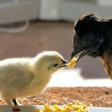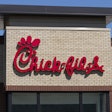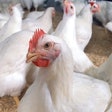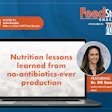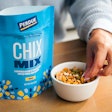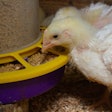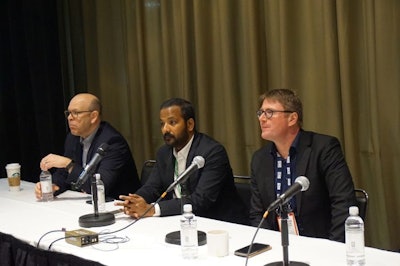
In the March issue of Feed Strategy magazine, WATT’s annual 2018 Poultry Nutrition & Feed Survey revealed that 43 percent of respondents report that antibiotic restrictions pose the greatest challenge to their operation’s formulation program and/or feed costs.
At the “Antibiotic growth promoters (AGP): Feed additive alternatives & replacement strategies” roundtable discussion, held at the 2018 International Production and Processing Expo (IPPE) and sponsored by Provimi, three panelists addressed this pressing topic.
The event, which was booked to capacity, centered around how animal feed additives can be leveraged to maintain and enhance health and performance in post-AGP poultry production.
“There are lot of alternative additives that have a lot more than just antimicrobial modulation or modes of action,” said Dr. Maarten De Gussem, a poultry nutrition consultant and founder of Vetworks. “You should try to find where are the loopholes in your antibiotic strategy and where can your alternative additives to help fill that gap.”
The group shared their experiences with different additive categories. Dr. Raj Murugesan, technical director with Biomin, noted that producers have found success in the use of phytogenic feed additives, probiotics, prebiotics and additives used in combination.
“Phytogenics seem to be working out pretty well overall because they have the complex mode of action with their antioxidant and antimicrobial abilities, and their sensory component increases feed intake,” Murugesan said.
NAE production in action
Running parallel with the importance of nutrition and gut health, the panel agreed that on-farm management (hygiene, biosecurity) plays a huge role in a successful program.
“When you go about raising no-antibiotics-ever (NAE) birds in a methodical way, you do not have to give up on production or welfare to do that, but you must go about it with a plan and work on [continuous improvement] strategies,” saidDr. Randy Mitchell, vice president – technical services, Perdue Foods.
Mitchell, who has been instrumental in Perdue’s shift to NAE production, shared best practices from the company’s journey and offered attendees advice on making the transition.
“The management at the farm is more important than anything we can do with the feed outside of making sure that we don’t have just terrible feed ingredients from a standpoint of a successful NAE program,” Mitchell reported, stressing that clear communication with the growers from the onset is key.
For those of you who were unable to attend, here is a gallery of video clips from the 2018 IPPE antibiotic replacement and elimination panel:
How has Perdue Foods benefited from moving to no-antibiotics-ever production?
How do feed additive alternatives to antibiotic growth promoters work together to improve poultry health?
What benefits can non-antibiotic growth promoters offer to poultry producers?
Is it possible for antibiotic alternatives improve poultry performance?
What are the limitations of phytogenic feed additives?







